In 2007, OMD reformed to play a series of concerts focussing on their most successful album ‘Architecture and Morality’ and their much-loved catalogue of singles such as ‘Electricity’, ‘Messages’, ‘Enola Gay’ and ‘Sailing On The Seven Seas’.
Featuring the classic line-up of Andy McCluskey, Paul Humphreys, Malcolm Holmes and Martin Cooper, although the shows had an obvious nostalgic element, it was always the intention to eventually release new material.
In 2010, this finally happened with the release of ‘History Of Modern’, a 13 track collection of songs that captured elements of OMD’s past, present and future. Since its release, ‘History Of Modern’ has seen OMD re-established as a relevant pioneering force that has influenced a variety of new synthesizer powered acts like KLEERUP, MIRRORS, VILLA NAH and MARSHEAUX as well as less likely alternative bands such as THE XX, in much the same way that OMD were inspired by KRAFTWERK.
Incidentally, one song on the album which gave an affectionate nod to the Düsseldorf Fab Four came in the form of ‘RFWK’, the title of which was made up from the first initials of the four classic line-up members Ralf, Florian, Wolfgang und Karl.
Following a successful jaunt around the UK and Europe in the Autumn of 2010, the ‘History Of Modern’ tour will soon be heading Stateside. While finalising arrangements for the territory that gave them one of their biggest international hits in ‘If You Leave’, OMD’s leader Andy McCluskey took time out to speak about how the campaign was progressing and where he hopes OMD will head next.
Now you’ve had time to reflect, how do you think things have gone with the ‘History Of Modern’ album and tour?
The general consensus within the band is that the tour was our favourite since we reformed, possibly because we are now comfortable that we know how to do it and the audience still likes us. It was wonderful to be playing some new material, it felt like the tour was relevant and it slotted so well into the setlist. The only downside was my bloody knee which I’m still in the process of rehabilitating. The reviews for the gigs were fabulous.
The album was received wonderfully as well which is quite remarkable if you compare it with the reception to many of our previous albums, even the ones that are now considered classics! It’s now sold over 100,000 and counting which is not too bad. I was reliably informed that it has sold more in Europe that either of the last two DURAN DURAN albums *laughs*
‘History Of Modern (Part I’) looks like it’s become a live favourite?
Yes, I would say in terms of live favourites, ‘History Of Modern (Part I)’ and ‘Sister Mary Says’ went down very well like it was a hit single from years ago; it was incredibly well received live considering the bitching that was done about it prior to the album’s release. I think that ‘New Holy Ground’… people never go bananas at the end of a slow quiet song, but the feedback has been that it slotted into the kind of ‘Statues’ / ‘The Beginning And The End’ section after ‘Maid Of Orleans’ really well.
Why was ‘History Of Modern (Part I)’ not originally chosen as the lead single?
The radio stations in the UK and Germany were offered four tracks; ‘If You Want It’, ‘Sister Mary Says’, ‘History Of Modern (Part I)’ and ‘New Babies: New Toys’. Most of them came back and said either “we can’t choose because they’re all good” or ‘If You Want It’. So we went with ‘If You Want It’ just because the radio stations said they’d play it… and then most of them failed to play it which was a bit frustrating *laughs*
I think ‘Sister Mary Says’ in particular was the obvious second choice and judging by the support we had from Radio2, maybe we should have gone with that first, I don’t know. ‘History Of Modern (Part I)’ now as the third single, it’s probably a bit late. We have struggled everywhere except Radio2 in the UK to get airplay. There’s this perception that OMD are “a heritage act and they play live, their fans will buy the album but we’re not going to play it our radio station because we only play classic hits or current hits, we’re not going to play something new by OMD!”, I think ‘History Of Modern (Part I)’ will probably struggle at radio.
‘If You Want It’ was dropped during the tour? Was there any reason for that?
Yes, it was an absolute tw*t to sing in its original key!
The melody line and chorus are in quite a high octave register, are you able to tell me who it originally written for?
Err! NO! I’m not going to tell you! *laughs*
It’s very high, it sounds great in that key on the recording but doing it live… we did it in Brighton and it was hard to sing. And as an encore, it just felt like you wanted something people knew better. So we swapped it over with ‘Walking On The Milky Way’. The dilemma we’ve got now is we’ve got a setlist that works and finishing with ‘Walking On The Milky Way’ and ‘Electricity’ bloody well works just as closing the main set with ‘Enola Gay’ works.
But we put ‘If You Want It’ back in for Germany and we dropped it down two semi-tones… it was a lot easier to sing but it didn’t sound as good, that was the problem. It didn’t soar quite as well. So it was a problem to play live.
There’s only one other song we’ve shifted the key in and that was ‘The Native Daughters Of The Golden West’ for the Liverpool Philharmonic Orchestra show because some of the vocals are just so high. But I am quite proud of the fact I think I must be one of the only men of my age who still sings songs in the original key. If you ever go onto YouTube and look at bands singing old songs, it’s in an awfully low key!! *laughs*
‘Save Me’ effectively launched the History Of Modern campaign but appeared to confuse some of the audience, especially with it being a mash-up of ‘Messages’ with Aretha Franklin and not being included on most versions of the album? What do you think now?
Difficult to say, I still think it’s a brilliant piece of music. I can see the argument that if you’re trying to re-establish yourself as a credible current record making act, possibly a mash-up is not the most credible way to relaunch yourself. However, everyone who heard it who wasn’t a die-hard OMD fan just went “that’s a hit!”.
People wanted to play it, but the cool people and the fans were largely reluctant about it so in the end, as we weren’t going to release it as a single, we chose to hold it off the album and have it as a bonus thing on iTunes. However, the Americans insisted they wanted it on their album. And if you want my opinion, I think it should still be released as a single in the summer or something.
Germany appears to be as responsive as ever to OMD, more so than the UK. Why do you think that is?
Several reasons, we have always had a strong following in Germany. We probably get even more radio play of the old songs in Germany than we do in the UK. But for this campaign, there were two elements that really helped us. As soon as Rough Trade / Good To Go in Germany heard the album, they came straight in with a big offer of an advance to secure the album so we could put together an independent promotion team.
Strangely enough, most of them have previously worked promoting DEPECHE MODE. And they then made contact with Pro-SiebenTV in Germany who offered us a deal to put together a massive TV campaign which gave us huge TV advertising with a major station on prime time… that certainly helped.
‘New Babies: New Toys’ is probably the nearest you’ve come to ‘Radio Waves’ and the motorik aesthetic of that NEU! / LA DÜSSELDORF axis for a while. You wrote ‘4-Neu’ which was your first love song to a German band. How influential have they been to the OMD sound in the past?
I think ‘Electricity’ was probably our first love song to a German band. As I said to Karl Bartos and Wolfgang Flür, ‘Electricity’ was really just ‘Radio-activity’ sped up and they said “yes, we know!” *laughs*
I am a huge fan of that driving motorik thud… yes, you’re right, ‘New Babies: New Toys’ probably is the closest we’ve come back to it. It’s been an element that we’ve had for years; ‘Radio Waves’, ‘Genetic Engineering’, ‘The New Stone Age’. Just occasionally, we do something that drives straight down the middle in a kind of linear fashion.
Have you heard that lost unreleased ‘Neu! ’86’ album that was reworked by Michael Rother and issued recently?
No, I haven’t managed to listen to it because I’ve been away so consistently, I haven’t managed to update my laptop… my iTunes store hasn’t worked for several months! Most of last year was just mental, I’ve forgotten how busy you are when you’re pretending to be a popstar, AND a husband and a father at the same time! *laughs*
So what did you think of it?
I thought some of it was just brilliant, there’s a track on there called ‘Euphoria’ which sounds like a lost OMD demo but of course, there was a couple of those mad Klaus Dinger sound collage things!
Ah!
So did you yourself have any reservations about resurrecting unreleased material such as ‘Sister Mary Says’, a song that was recorded for ‘Universal’ in 1996 or ‘The Future, The Past, and Forever After’ which was rooted in the ‘Sugar Tax’ era?
No I didn’t because I thought the songs were really strong. There are a few elements on ‘History Of Modern’ which I knew in advance were going to p*ss people off; like the hi-hat programming sounded like the Alesis HR16 drum machine from 1991… perish the thought! But to be perfectly honest, by calling the album ‘History Of Modern’, it gave ourselves the right to do that. I’m very happy with ‘History Of Modern’ considering it was a clearing of the decks album, it was getting us started again. Paul and I have described this is our John The Baptist album… it’s the one that speaks of the one who will come after! *laughs*
… back to the old religious imagery again! *laughs*
Yes! It was a very strong album but both Paul and I are excited now about the prospect of a new album. We’ve used up all the stuff we’ve had lying around. It was good stuff but stylistically, maybe a few people can moan that “it wasn’t early 80s, it was early 90s”… shock, horror! I think ‘Sister Mary Says’ is f*cking great but if there’s one song on the album that I sometimes blow hot and cold over with, it’s ‘The Future, The Past, and Forever After’.
 But speaking of modern, there was a throbbing, almost feminine electro dancefloor vibe on ‘Pulse’. How did the GENIE QUEEN members Abi Clancy and Anna Ord come to be involved?
But speaking of modern, there was a throbbing, almost feminine electro dancefloor vibe on ‘Pulse’. How did the GENIE QUEEN members Abi Clancy and Anna Ord come to be involved?
That song is sort of a semi-cover version. It was originally given to me for GENIE QUEEN, that’s how they come to be on it. And I always loved it. The GENIE QUEEN girls cut some vocals on it and then it never got used for them and it was lying around, I just kept coming back to it. So I threw away all of the verse vocals, redid my own verse vocals in what my wife calls ‘the dirty phonecall song’ and I kept Anna and Abi in it.
The Danish girl was off the original demo that was sent to me. Essentially in a very modern and thieving way, I robbed somebody else’s song and turned it into our own.
What did you think of some fans reaction to it?
I think we can still p*ss people off!
Have you thought about getting another girl group to do it, because there’s possibly a hit single there if it was done by the ladies?
Yes, I think you’re right. I’ve actually got a few other tracks lying around that I would like a girl group to do, but having been through ATOMIC KITTEN, GENIE QUEEN and helping other young artists get established, just about the last f*cking thing I want to do in the world is to try and sell an act or songs to a record label. It fills me with horror, I have nothing but disdain for 95% of people in the music industry.
The mistake I made with GENIE QUEEN was, I should have just released it myself. The amount of time and money I spent on it, I should have gone straight in with ‘What A Girl Goes Through’, made a single and video, had a hit and then had people begging me to sign them!
‘New Holy Ground’ probably represents what is great about classic ORCHESTRAL MANOEUVRES IN THE DARK as opposed to OMD. On the new songs you have written with Paul Humphreys, how have your collaboration methods changed from when you were doing it at The Gramophone Suite? And do you intend to work in this more collaborative manner in the future.
The initial way we worked, I have to be honest and both would agree, it wasn’t terribly effective. We thought we could solve the problem of the geography by sending files through the internet. It works but it’s just too slow. And I think Paul would admit as well that you need to stay on his case. Left to his own devices, he always got something else to do. I think we’ve discovered that the ideal way for us to work is for me to demand he’s in the same room as me. And that way, things happen a lot more quickly. And there’s a spark and chemistry as we patently discovered with ‘New Holy Ground’.
With ‘Green’, it was one you did sending files across?
I played him that song in its original demo when he came to my studio. He said it was a good song but we both agreed the music was pants. So he said “send me the vocal and I’ll rework the backing track” and he did a brilliant job. There is one other song I’ve got that I might do with Paul that has a great lyrics but the backing track doesn’t quite work. I think ‘Green’ worked because there was already a blueprint in the sense that we had a vocal and arrangement that worked, but Paul had to come up with a backing track that would tie the whole thing together. But it’s quite a slow process working with Mr Humphreys.
The demo of ‘Green’ actually had that movement on the lovely end section that was influenced by ROXY MUSIC’s ‘If There Is Something’.
Yes, which we decided to keep. What we basically did on that one, we just cut the demo tape and flew the stereo track onto the end of ours and just put overdubs on it! It’s a brutal piece of editing! *laughs*
What is it about the early ROXY MUSIC stuff with Brian Eno and later, the ‘Stranded’ album that makes them so special for you?
I think the pure energy of the uptempo songs and the pure melancholy of the slower songs. I think the reformed ROXY MUSIC that came back with ‘Manifesto’, ‘Flesh and Blood’ and ‘Avalon’, it’s was beautiful and very slick, but it took me a while to get my head round it. But it was almost like a different band, because everything they did before was completely different. It was like they’d turned into STEELY DAN! It was almost two different bands, even more so than early OMD and 90s OMD!
I have a soft spot for ‘In Every Dream Home A Heartache’, that is so clever, so well done. It’s so touching and so raw.
I liked the raw honesty of what BRYAN FERRY used to do. People raved to me about his new ‘Olympia’ album and I did get it. Apart from the single ‘You Can Dance’ and the very last track ‘Tender Is The Night’, I thought the rest of it sounded like a bunch of out-takes from ‘Avalon’ but with lyrics where Bryan really couldn’t be a*sed!
Will you be checking ROXY MUSIC out on this ‘For Your Pleasure’ 40th anniversary tour?
I might try and go to that. But if he plays any of ‘Olympia’, I’ll be going to the bar! I’m a huge Ferry and Roxy fan but I was disappointed. I guess in the same way everyone was nervous when ‘History Of Modern’ came out, you want it to be great and then if you hear something and it isn’t, you’re like hmmm!
There were some KRAFTWERK inspired synthesizer tunes on the album. How did you get the vintage Vako Orchestron choral sound on ‘The Right Side?’
It actually a mixture of a Mellotron, a Roland string and an actual CD-ROM sample of female sopranos, the same ones that were used on ‘Sister Mary Says’. It’s a mixture of the three that creates the harmonic blend that actually works.
What did Karl Bartos and Wolfgang Flür think of ‘RFWK’?
Karl loved the old synthy sound and was quite flattered. And Wolfgang, I never found out because he came to the Cologne gig and we didn’t get to meet him afterwards because he found the gig was so hot and full that he ended up feeling ill and leaving! Unfortunately, something similar happened to Karl Bartos as well. The gig in Hamburg was so full, he and his partner Bettina couldn’t get in, they were listening to it from the foyer and after a few songs they just thought “b*llocks” and left! *laughs*
So unfortunately, both of them came to the gigs and I didn’t get to see them because they couldn’t get into the venues properly!
This was one of the problems with the German tour, some of the gigs were not quite sold out while others were over sold! The gig in Leipzig, there were 300 people who had to spend the whole gig in the foyer! Next time, we’ll be having someone clicking numbers on the door!
Wolfgang Flür has said his book ‘I Was A Robot’ and the ‘Synth Britannia’ documentary about how the young OMD came backstage at The Liverpool Empire in 1975 to tell KRAFTWERK that they had shown you the future. Is this actually truth or just legend?
It’s legend! I was the only one who saw them play at The Liverpool Empire. And I didn’t go backstage. I was 16, I wasn’t going to be hanging about backstage! And also, they were building the Mersey Rail underground at the time and I had to get the bus back so I couldn’t hang around. The first time I met them was 1981 at the Zeche Club in Bochum, Germany so it’s an apocryphal urban myth. Wolfgang sort of got his story mixed up there! *laughs*
So should the KRAFTWERK brand continue on and record new material?
My thing is KRAFTWERK will always be God to me as far as I’m concerned, But if Ralf Hütter is going to do an album that sounds like ‘Vitamin’ and ‘Aerodynamik’, then I’m not interested. The problem for me with Ralf Hütter is he’s distilled his concept of KRAFTWERK to the point where it’s like distilled water, it has no taste. It was all the vagaries of the human playing and not so perfect electronic instruments that gave the earlier albums a real humanity.
If you listen to them now, you can feel the human touch on them as we’re so accustomed now to programmed music. I’m sure they wished they weren’t, that they were programmed by robots in the first place. The more Ralf gets to his ‘nirvana’, the worse the music is unfortunately.
With that in mind, can you therefore relate to why some OMD fans may have been disappointed with ‘History Of Modern’?
I can see why a few tracks would be not what they wanted because I know the hardcore fans wanted something that sounded like the first four albums and nothing else. So I can understand why some of the songs didn’t tick all their boxes. However, I think that if Ralf Hütter released something that sounded like ‘Vitamin’ but had a f*cking great lyric and melody, I would lap it and I wouldn’t sit there going “there’s the hi-hat programming that was on the reworked Mix album which I didn’t really like in 1991…”
I thought some of the nit picking was excruciatingly anal and said much more about them than the quality of the music that was on the album. And I’m sorry, I think that anything less than 4 out of 5 stars is b*llocks.
‘History Of Modern’ is better than almost all the albums OMD have ever done apart from the first four. I was very comfortable with the album and I think most people recognised that, regardless whether you thought it was a real Korg or a Pro-Tools version, or right or wrong hat! I thought the songs were brilliant and for middle aged men, I think it p*ssed over most people’s comeback albums.
I’m entirely unrepentant Chi, I think it was a f*cking great album, especially when you consider it was the first one we’d done in how many? years. If KRAFTWERK made an album like ‘History Of Modern’, I would be over the moon. Yeah, I might decide that this particular track isn’t my favourite but I would die for KRAFTWERK to do something as good as I believe ‘History Of Modern’ is.
How do you think the support acts VILLA NAH and MIRRORS went down with the OMD faithful?
I thought they were both great, very well received and rightly so.
It was really nice that both acts included samples of ‘Messages’ into their songs during their sets.
NO! YOU’RE KIDDING ME?
VILLA NAH had it on the end of ‘Ways To Be’ and MIRRORS had it running through ‘Ways To An End’…
Well! I’m freaked out now because I don’t remember hearing any of that but to be perfectly honest, when you’re backstage, the sound isn’t that clear!
You weren’t too keen on some of the female electro artists like LA ROUX and LITTLE BOOTS who found fame in 2009. But you’ve found a bit of love for ROBYN. And what do you think of 2010’s generation of male electronic based acts like HURTS or DELPHIC?
HURTS and DELPHIC are ok. I like Stay by HURTS but in some respects, HURTS sound a bit to me like a millennial boyband with synthesizers, although a lot of the album doesn’t sound as simple and as spartan as ‘Wonderful Life’. DELPHIC? I’m sorry but they don’t quite press my buttons either.
But the more I listen to the ROBYN stuff… I’ve gone backwards now and I’ve fallen in love with ‘Konichiwa Bitches’ from the ‘Robyn’ album which I really wasn’t that bothered about. And the video is funny as f*ck! And of course, I’ve started doing a bit more homework because I’ve been sat here. And I’ve now become a huge fan of KLEERUP who she did ‘With Every Heartbeat’ with.
KLEERUP’s album is brilliant. If there’s anyone who’s got the OMD sound nailed for the 21st Century, it’s him!
Yeah, I think so. Basically, the vocal melodies on his songs are like they’re derived from synth melodies so they have that sort of OMD sound. It’s often a clear, often slow developing vocal melody. I’m very slow off the mark, just literally in the last week I’ve started listening to KLEERUP. I absolutely love it and even to the point of wondering about whether or not we should be doing some work, or some mixing or producing.
So in hindsight then, do you think that Mike Crossey was the best choice to mix ‘History Of Modern’? Although he has had enormous success, his track record ie RAZORLIGHT, THE FOALS, THE KOOKS didn’t indicate an empathetic ear for electronic based pop music. Could ‘History Of Modern’ have sounded better with say either KLEERUP or FOTONOVELA (who produce MARSHEAUX) behind the studio desk?
I suspect you might be right. I think Mike improved the mixes he was given.
He fattened them out, got some better effects, got a better balance. I think Mike’s dilemma was he had me hovering over his shoulder! I think it might be better to give something to somebody and say “do your version of it” and then we’ll spend time adjusting to whether we think it works or not. Because that was the other thing with Mike, we didn’t really have time to allow him to go off, he was just mixing what we gave him.
Maybe we should think about being a bit more pro-active with people like KLEERUP and the FOTONOVELA boys, and saying “we like what you do, we’re not far away from each other so just do something like that”. But they’ve both got very different sounds; FOTONOVELA have got a much more crystal clear digi-analogue sound… very bright, very wet. KLEERUP has got a much more grungy electro sound which is quite interesting actually because I quite like the lo-fi-ness of some of his drum sounds. But they’re absolutely incredibly present loud lo-fi drums… it’s not distant sh*t drums, it’s right in your face!
You and Paul did quite a few promotional live sets as a duo recently which harked back to the Eric’s days and you both appeared to be very comfortable with the format. Have you considered touring in this guise, perhaps in territories where OMD may a following but not have a particularly large foothold? I’m thinking in America…
I think the feeling is if we’re a band, we’re a band. We generally only do the two piece thing when that’s really just not practical like in-stores or a charity concert where we can turn up and do a short gig. I don’t think the two of us and a laptop would really want to do a full hour and a half OMD set, it wouldn’t be right. But obviously we could tour places like Japan and Australia, and probably not lose the kind of money we would do if we took the whole band. Y’know, we’ll think about it.
You’re touring North America in March. How important is it for OMD to play the USA again?
I don’t think we treat it like The Holy Grail like people used to. Paul Humphreys always says: “We broke America, but America broke us!”. I think we’re realistic about it, but it seems right that we finally get to go and play in America. We’re doing this with the band and crew on a sleeper bus, no lights, no PA, just house systems, whatever they’ve got. No LEDs, no projections, just pure and simple. Here’s the band, here’s the audience, here’s the music… GO!
Having spent the last three and a half years playing so successfully, I would love to tour the whole world. I want go to Asia, Australia and South Africa again. And I want to go to places in Europe that we don’t seem to be able to get into. And I want to go to South America. It pains me not to be touring the world but it’s purely and simply the financial logistics of taking the whole band and the crew, and what the local promoters are prepared to pay. You’re absolutely right… if me and Paul went, we could do it for peanuts and OMD as a two-piece could tour the world. But it just seems wrong, there would be two versions of OMD publically.
Your cover of Mercury winners THE XX’s ‘VCR’ has been premiered on Soundcloud, but you’ve recorded a magnificent version of ‘Shelter’ as well…
I think ‘Shelter’ is even better than ‘VCR’! It beautiful because it’s got that suspended choir chord that sounds like KRAFTWERK and the piano. It’s been quite interesting learning THE XX’s songs because when you listen to them, your initial impression is they’re quite meandering and unfocussed.
But once you get past the ‘stoner’ presentation that they have, they actually have quite simple, specific arrangements. They are arranged, they have a format but the sheer minimality of it is really quite impressive. I have to say it took me quite a few listens to get into THE XX. It was a bit like I had to acquire the taste.
But having stripped down and analysed their songs, strangely enough I think it’s going to have a good influence on OMD because things like ‘New Holy Ground’, ‘VCR’ and ‘Shelter’ have encouraged us to be confident in the quality of the minimal work again. People go how did OMD influence THE XX… but have you listened to ‘4-Neu’? Have you listened to some of the really simple, stripped down B-sides?
What were they recorded for?
The record company thought it would be very cool to ask THE XX to do a mix for us. Of course, everybody and their dog last year wanted THE XX to do a mix for them. The NME were planning to do a covers compilation album of THE XX’s songs so the band said “if you cover one of our songs, we’ll do a mix for you” in a reciprocal deal. We did ‘VCR’ which I loved playing the bass on and then they went “Oh God, not ‘VCR’… everyone’s doing ‘VCR’!” so we did ‘Shelter’. So that’s why we did two of their songs, but the album never happened.
So will ‘Shelter’ be the B-side of ‘History Of Modern (Part I)’?
No, ‘VCR’ is one of the B-sides… ‘Shelter’ we have got up our sleeves for future reference to tease people with. I’m glad you loved it, ‘VCR’ is good but ‘Shelter’ is f*cking gorgeous!
And what next for OMD?
We have the North American and German dates. A lot depends on this American tour… if its successful, we may go back in the Autumn.
ELECTRICITYCLUB.CO.UK gives its warmest thanks to Andy McCluskey
‘History Of Modern (Part I)’ is released on 28 February 2011 as a limited edition 4 track 10 inch vinyl single and an extended CD EP which includes all the previous ‘History Of Modern’ period B-sides. Both formats also feature OMD’s cover of ‘VCR’.
The album ‘History Of Modern’ is still available
OMD’s 2011 North American tour includes:
Toronto Phoenix Concert Theatre (5 March), Montreal Le National (6 March), Boston Paradise Rock Club (7 March), New York Webster Hall (8 March), Washington DC 9:30 Club (9 March), Chicago Park West (12 March), Atlanta The Loft (14 March), Houston House of Blues (16 March), Dallas Granada Theatre (20 March), Denver Bluebird Theater (22 March), Salt Lake City The Depot (23 March), Los Angeles The Music Box (25 March), San Francisco Mezzanine (26 March)
They also play the following German dates in 2011:
Erfut Thueringerhalle (22 June), Leipzig ParkbÜhne (23 June), Dresden Elbufer (26 June), Cologne Tanzbrunnen (1 September), Hamburg Stadtpark (2 September), Bochum ZMF (4 September), Berlin IFA Sommergarten (5 September), Schwerin Freilchtbuehne (6 September)
https://www.facebook.com/omdofficial
https://twitter.com/OfficialOMD
Text and Interview by Chi Ming Lai
30th January 2011

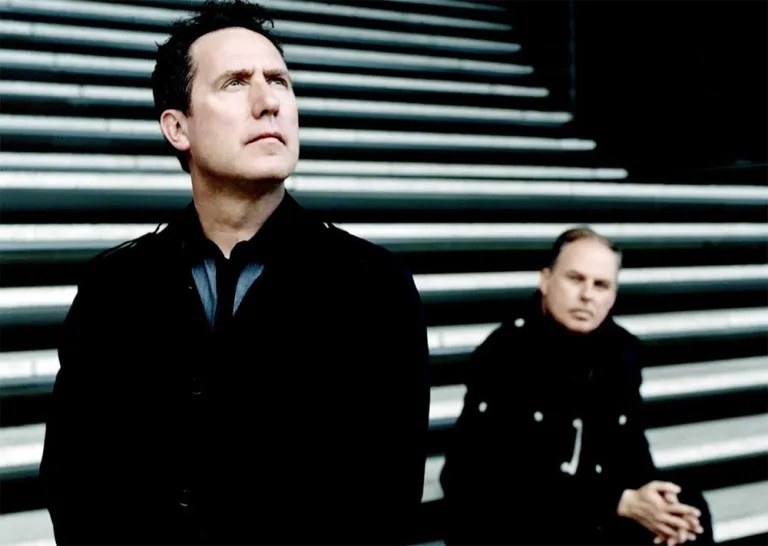
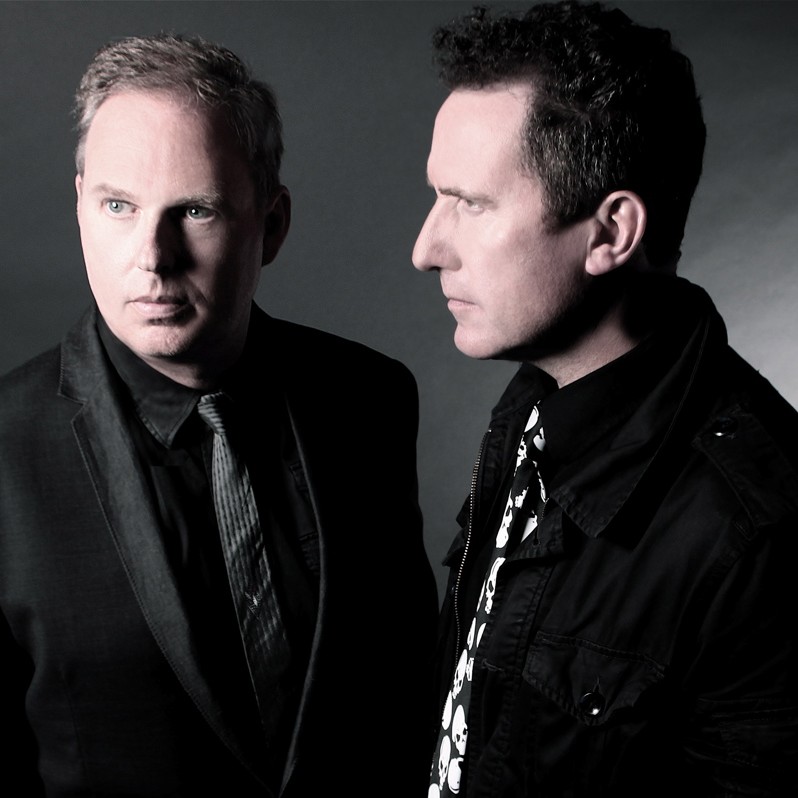
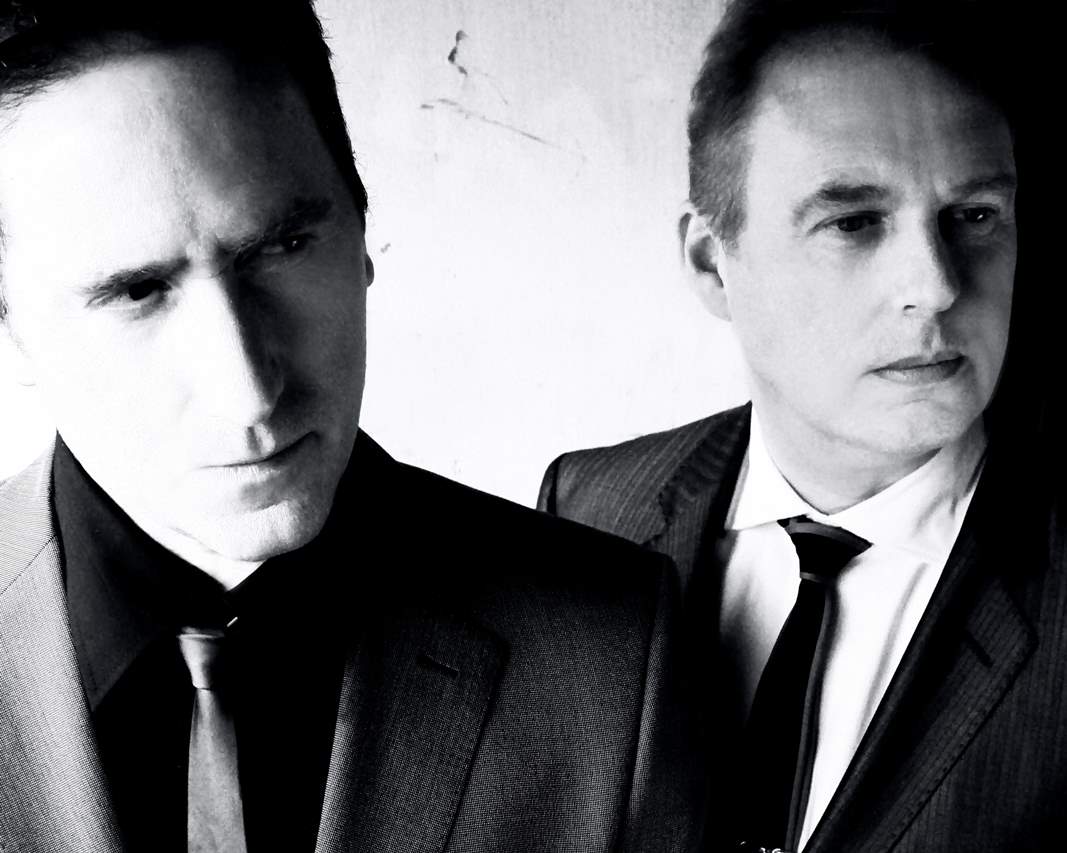
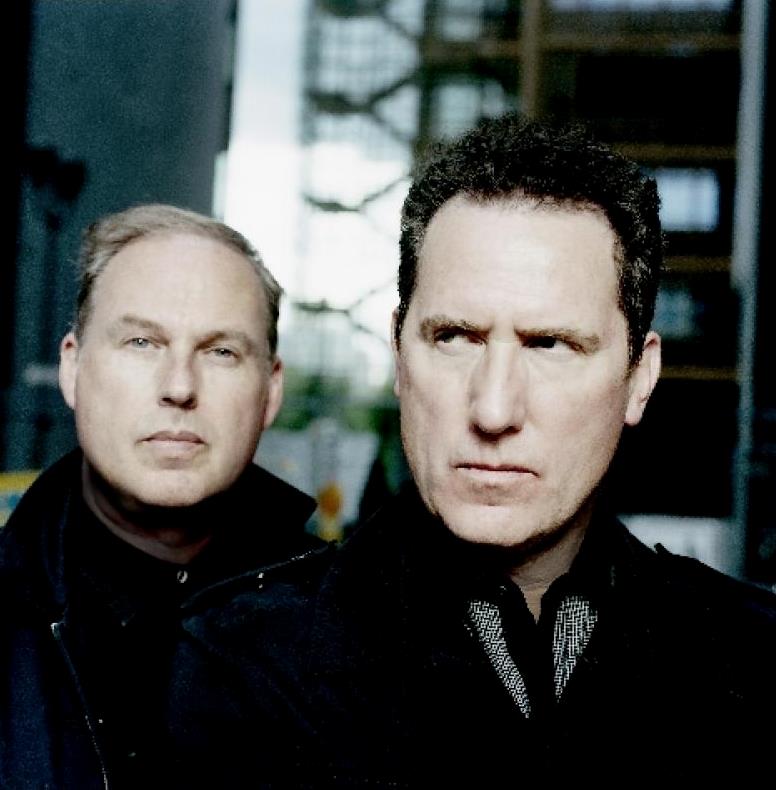
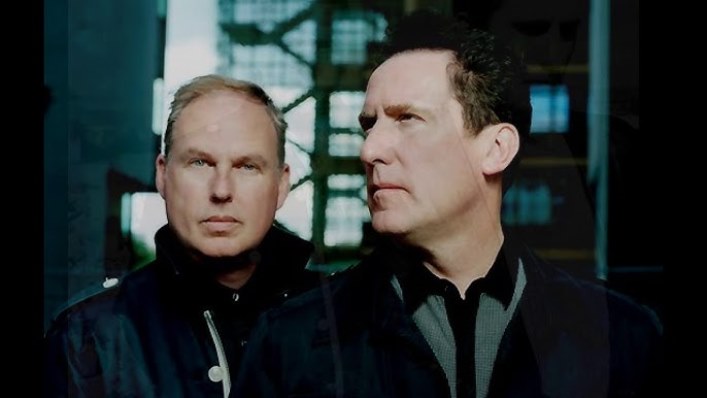
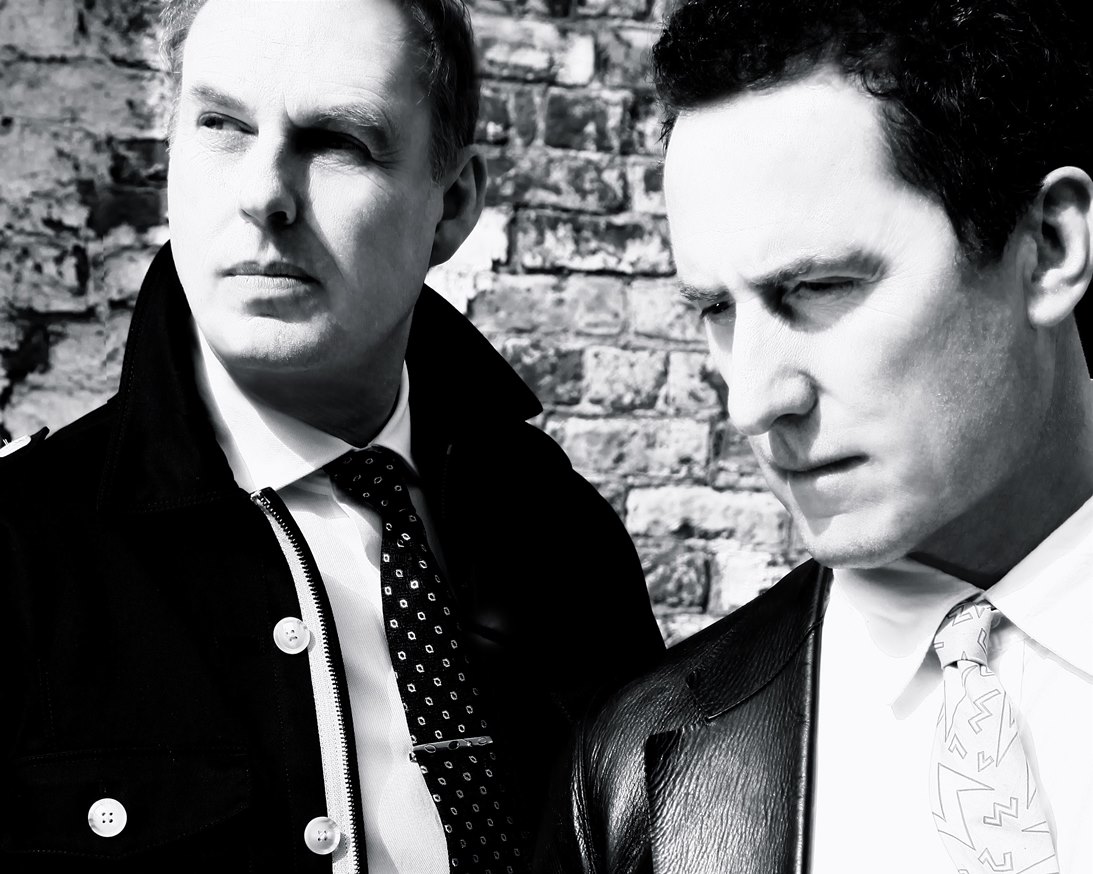
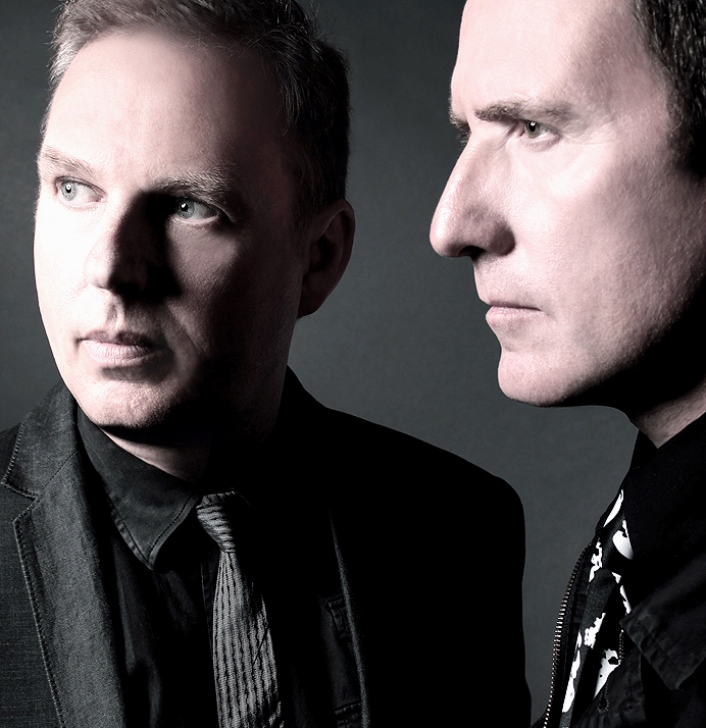
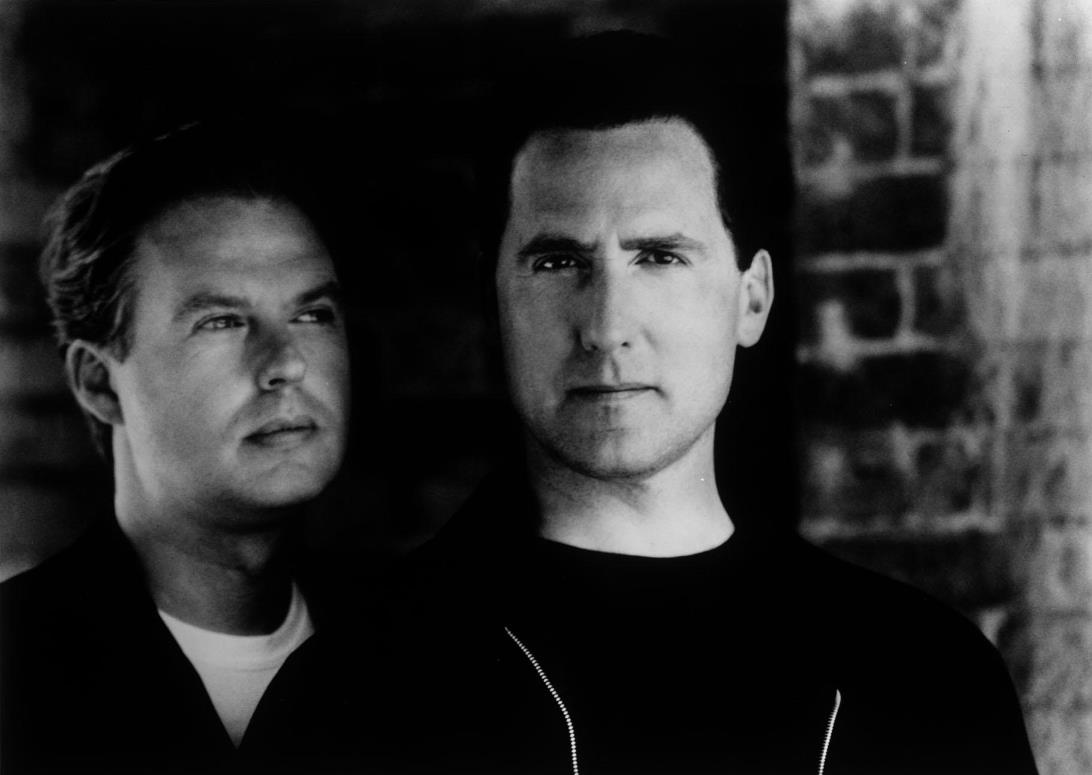
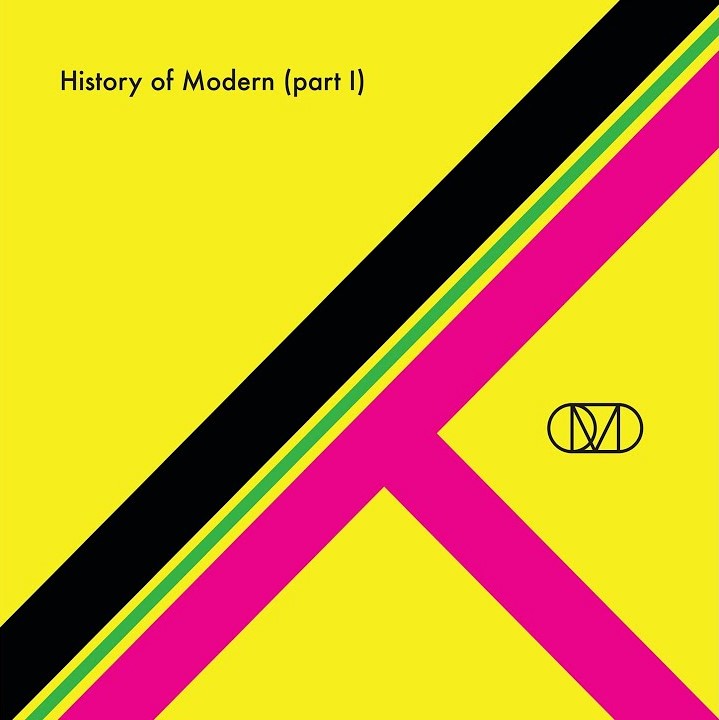
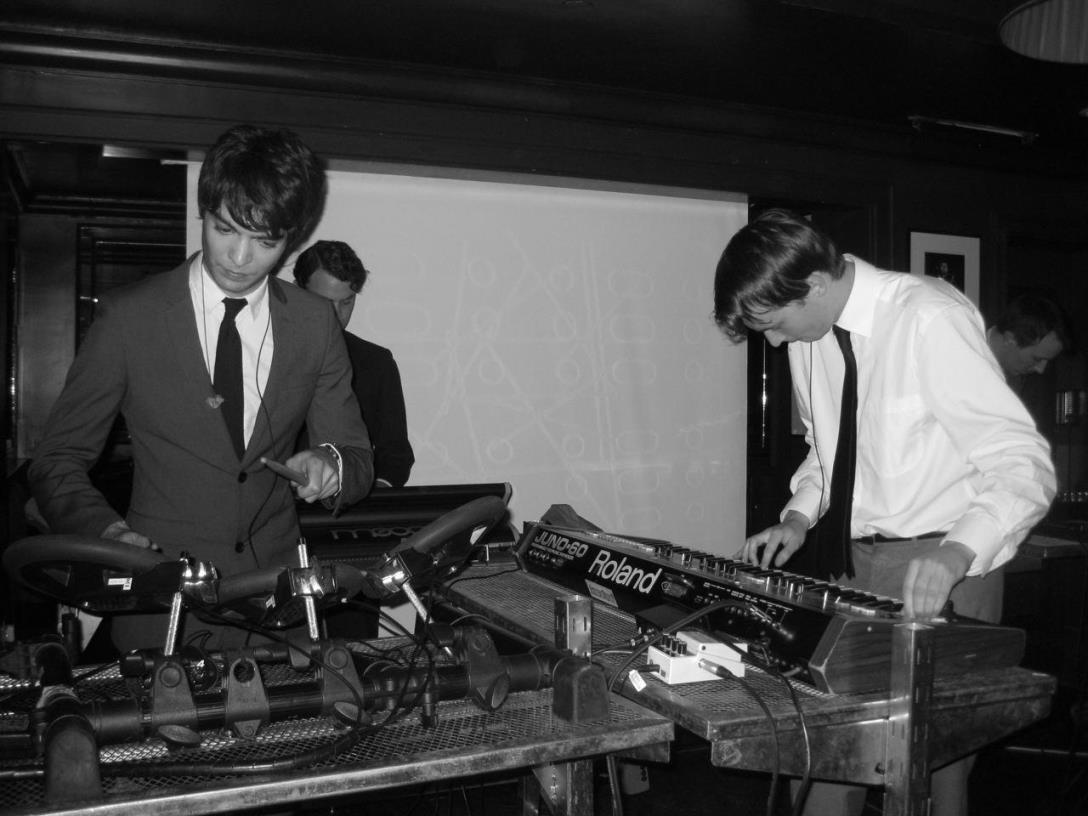
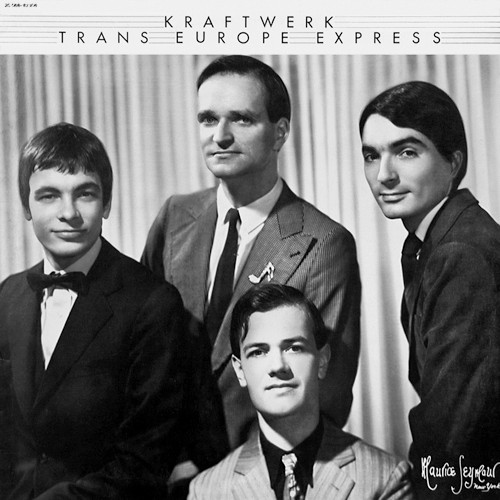
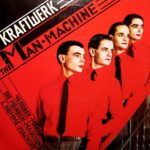

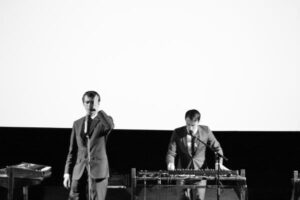
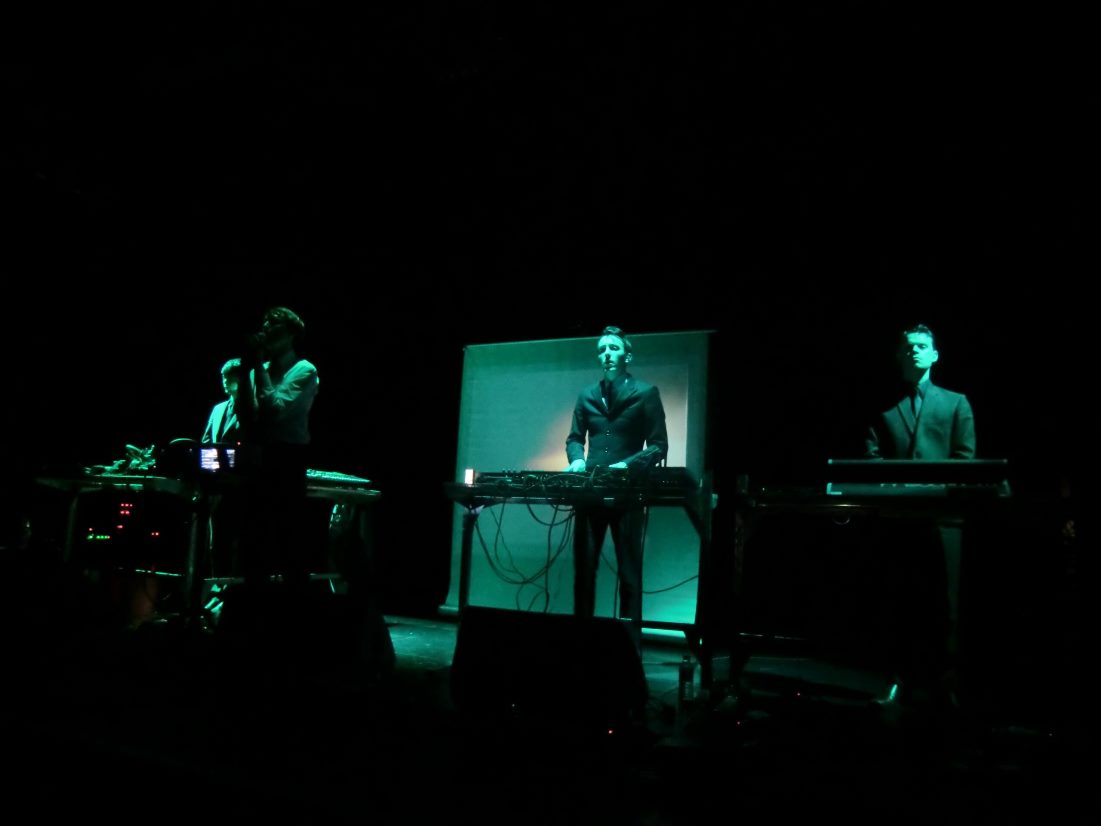
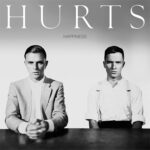
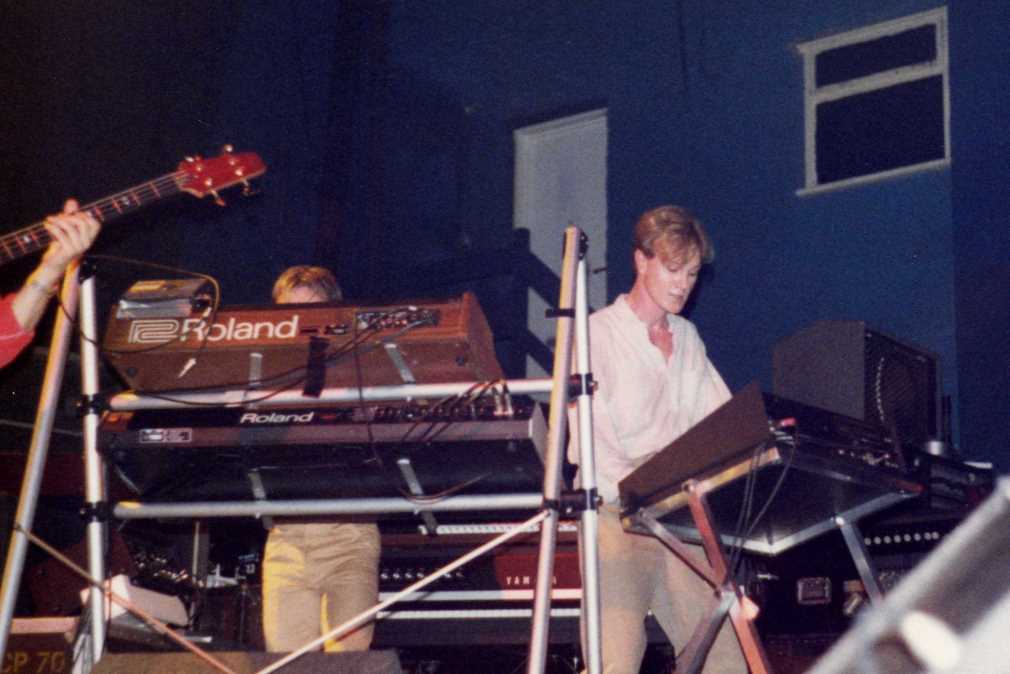
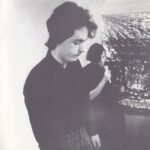
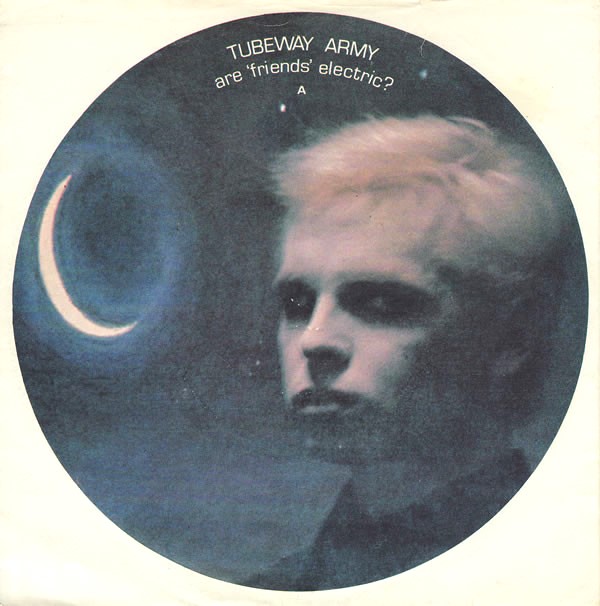
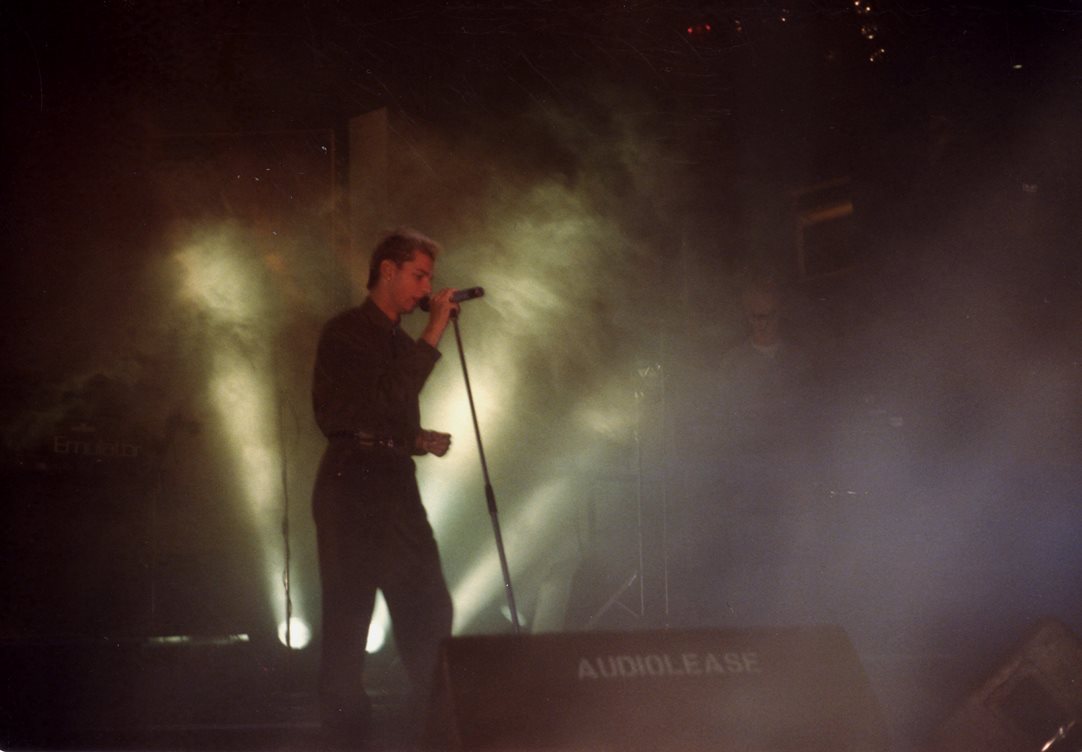
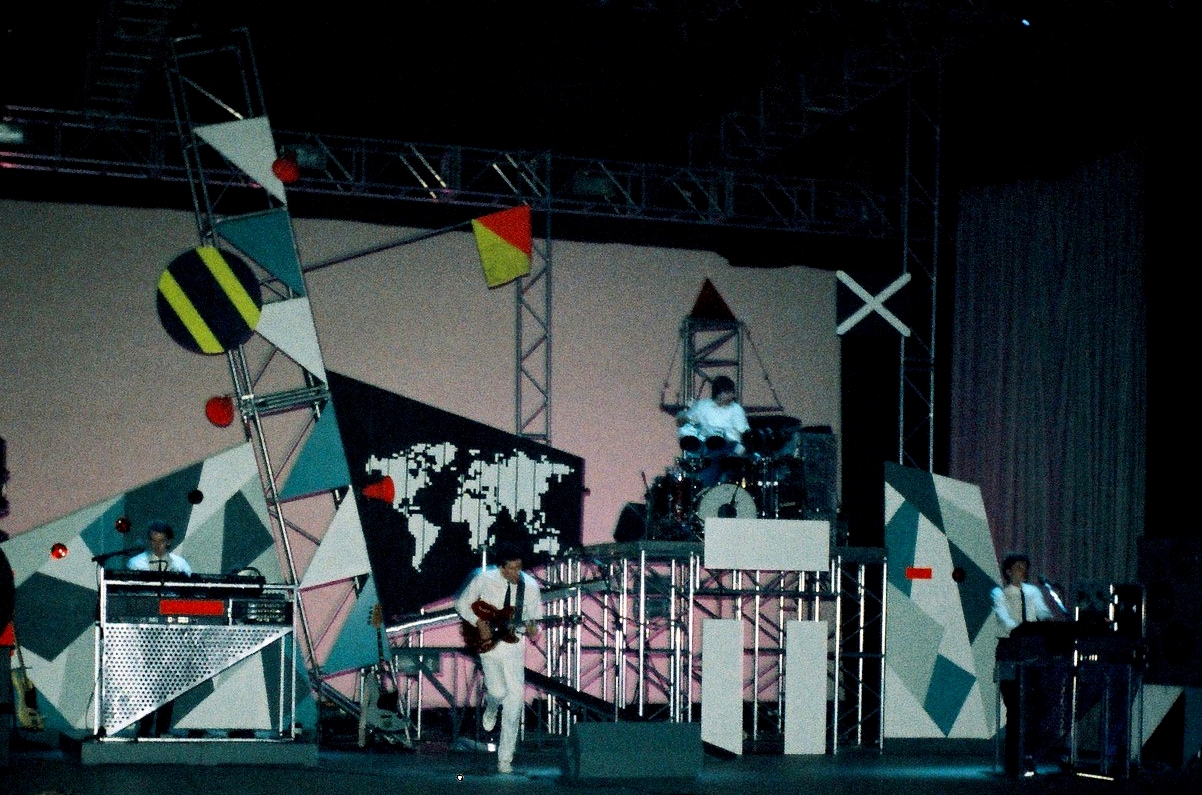
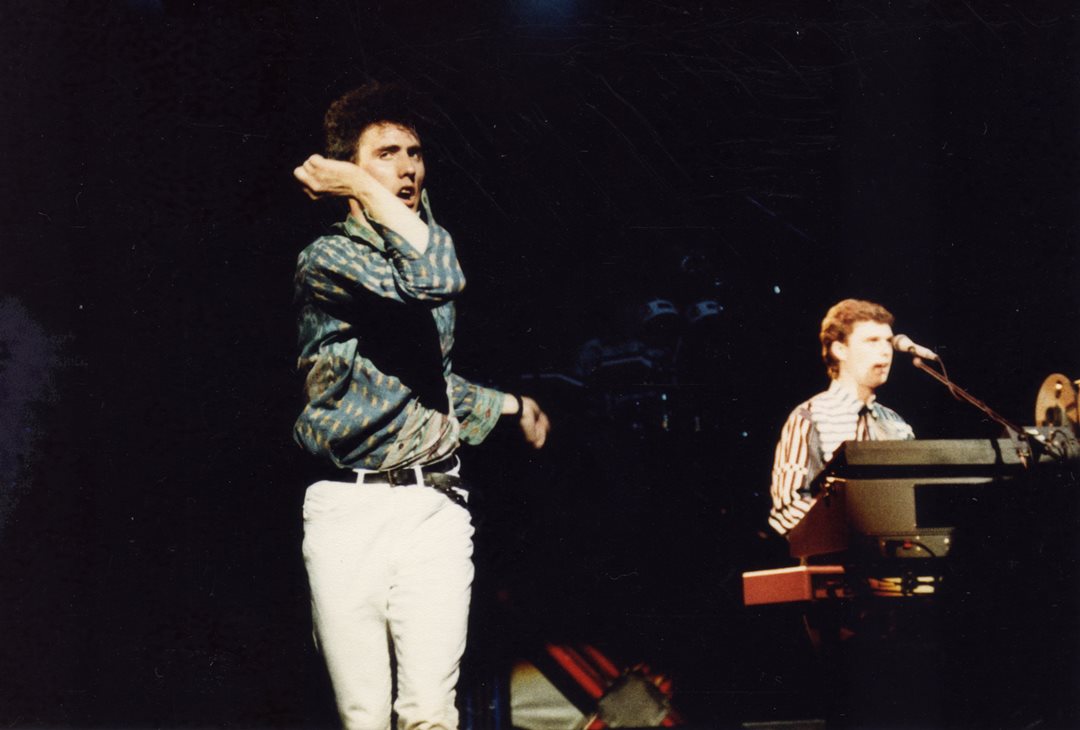
Follow Us!